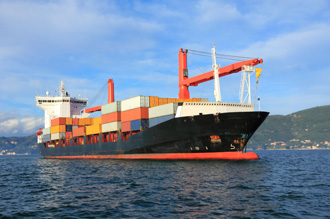First of all, the Globally Harmonized System or GHS is used to classify, label and communicate relevant information regarding chemical hazards in the workplace. It differs from the previous systems that it has since replaced in the following way: the GHS is internationally agreed upon, and put forward and developed by the United Nations. One of the main problems before GHS came into common use was that different countries had different systems of chemical hazard classification, and many countries, in fact, had more than one. Naturally, this led to a great deal of confusion.
We can divide the scope of the globally harmonized system into two areas, which we shall discuss separately: GHS hazard classification and GHS hazard communication.

GHS Hazard Classification
Using practical experience in the field, years of collected research and literature, and test data, this global system is complex and covers every possible issue. First, the hazards are classified into health hazards, physical hazards and environmental hazards.
Physical Hazards
This area makes use of the United Nations Dangerous Goods System, easily found on the United Nations website. They include flammable gases and aerosols, explosives, pressurized gases, gases which cause oxidization, flammable solids and liquids, substances which are self-reactive, pyrophoric solids and liquids, substances which are self-heating, flammable gas-emitting substances (when in contact with water), oxidizing solids and liquids, organic peroxides and substances which are corrosive to metal.

Health Hazards
Health hazards are further classified into acute toxicity, skin corrosion, skin irritation, eye irritation, serious eye damage, skin sensitizer, respiratory sensitizer, germ cell mutagenicity, reproductive toxicity, carcinogenicity, specific target organ toxicity or STOT and aspiration hazards.
Environmental Hazards
Environmental hazards are classified into two major subheadings, namely acute aquatic toxicity and chronic aquatic toxicity. The former refers to damage that is caused to the aquatic organisms in a short-term exposure. The latter refers to the potential that a material has due to its specific properties that may have negative effects on the organisms in relation to their lifecycles.
GHS Hazard Communication
Once hazards have been classified, they must be communicated to those who come into contact with the hazardous chemicals, including but not limited to workers and emergency personnel. The guiding principles behind communication regulations are as follows:

- Trade secrets and other confidential information are not dealt with directly, but rather in general terms.
- GHS states that communication should not be limited to one form (accepted forms include labels, placards and SDS (safety data sheets).
- Hazard statements as well as precautionary statements should be made.
- Any communication and information should be standardized, easy to follow and easy to understand.
- Consistency is necessary to avoid any kind of confusion regarding communications.
- New evidence should be swiftly incorporated into hazard information, and all existing research should be taken into account.
The problem with a global system, however, is that it must take many different cultures and sensibilities into account, including language differences, different nuances, and the comprehensibility of pictograms.





















